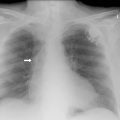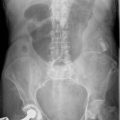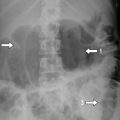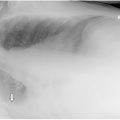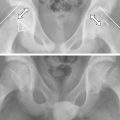17 Lobar collapses
Background
Lobar collapses are important as they are a common presentation of bronchial carcinoma (see Chapter 15). Other causes of lobar collapse include any process that obstructs a main bronchus, including mucus plugging in asthmatics and postoperative patients, foreign bodies and ET tubes (these usually cause complete collapse; see Chapter 2).
General radiological features common to all collapses
• A radiological hallmark of all collapses is loss of lung volume on the affected side, which worsens in chronic collapse – if the collapse is acute there may be no loss of volume.
• Look for a mass at the hilum, which would increase suspicion of a tumour as the cause. However, a tumour may be present and not seen due to the collapse and any new unexplained collapse warrants further imaging/investigation.
• The remainder of the lung on the side of the collapse may be more lucent than that on the opposite side, with a decreased vessel count.
Remember to use the silhouette sign to your advantage.
Collapsed lung is generally homogeneous in density – with no air bronchograms seen.
Stay updated, free articles. Join our Telegram channel

Full access? Get Clinical Tree


